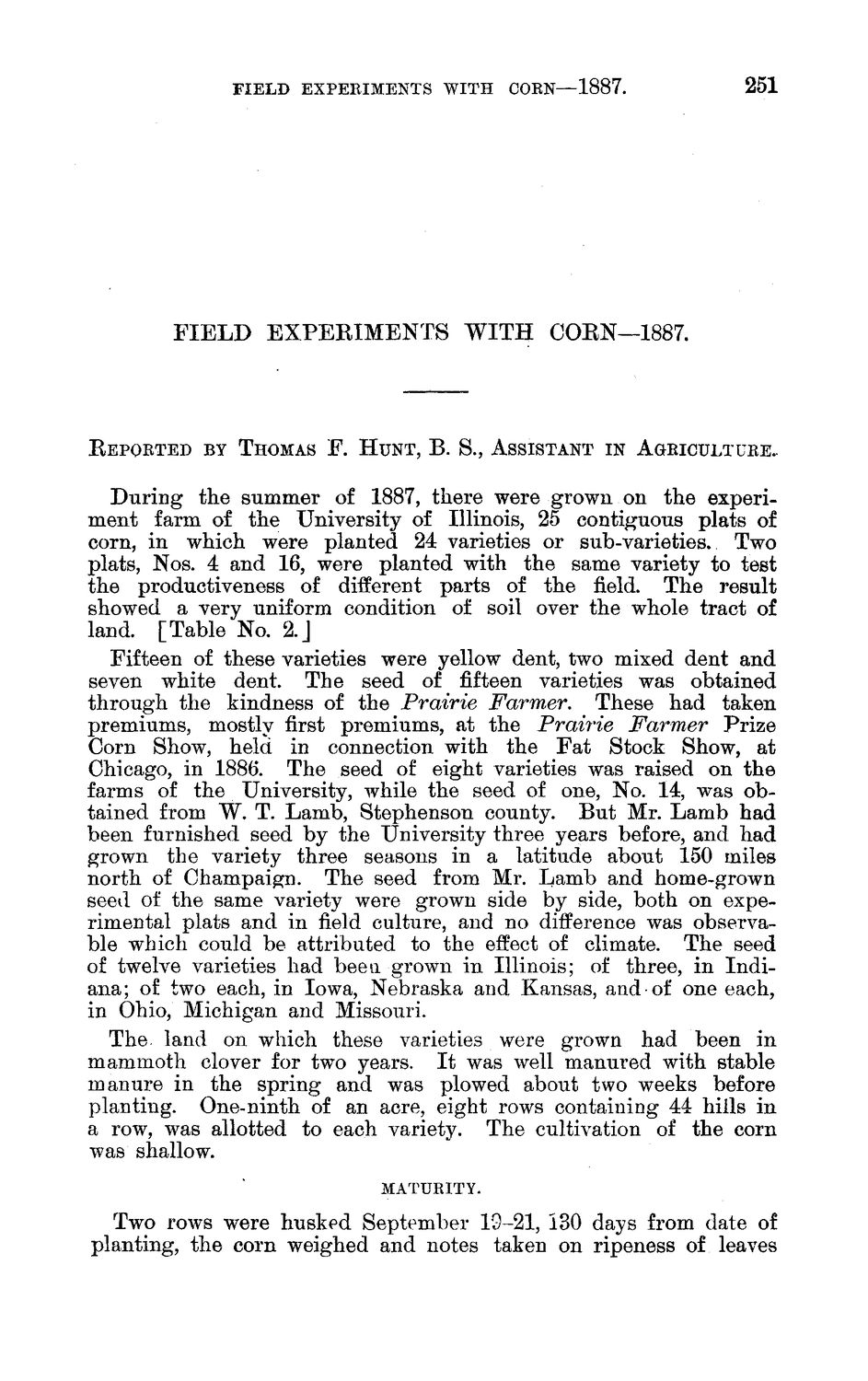| |
| |
Caption: Board of Trustees Minutes - 1888
This is a reduced-resolution page image for fast online browsing.

EXTRACTED TEXT FROM PAGE:
FIELD EXPERIMENTS WITH CORN—1887. 251 F I E L D E X P E B I M E N T S W I T H CORN—1887. REPORTED BY THOMAS F. HUNT, B. S., ASSISTANT IN AGRICULTURE.. During the summer of 1887, there were grown on the experiment farm of the University of Illinois, 25 contiguous plats of corn, in which were planted 24 varieties or sub-varieties. Two plats, Nos. 4 and 16, were planted with the same variety to test the productiveness of different parts of the field. The result showed a very uniform condition of soil over the whole tract of land. [Table No. 2.J Fifteen of these varieties were yellow dent, two mixed dent and seven white dent. The seed of fifteen varieties was obtained through the kindness of the Prairie Farmer. These had taken premiums, mostly first premiums, at the Prairie Farmer Prize Corn Show, held in connection with the Fat Stock Show, at Chicago, in 1886. The seed of eight varieties was raised on the farms of the University, while the seed of one, No. 14, was obtained from W. T. Lamb, Stephenson county. But Mr. Lamb had been furnished seed by the University three years before, and had grown the variety three seasons in a latitude about 150 miles north of Champaign. The seed from Mr. Lamb and home-grown seed of the same variety were grown side by side, both on experimental plats and in field culture, and no difference was observable which could be attributed to the effect of climate. The seed of twelve varieties had been grown in Illinois; of three, in Indiana; of two each, in Iowa, Nebraska and Kansas, and of one each, in Ohio, Michigan and Missouri. The land on which these varieties were grown had been in mammoth clover for two years. I t was well manured with stable manure in the spring and was plowed about two weeks before planting. One-ninth of an acre, eight rows containing 44 hills in a row, was allotted to each variety. The cultivation of the corn was shallow. MATURITY. Two rows were husked September 19-21, 130 days from date of planting, the corn weighed and notes taken on ripeness of leaves
| |